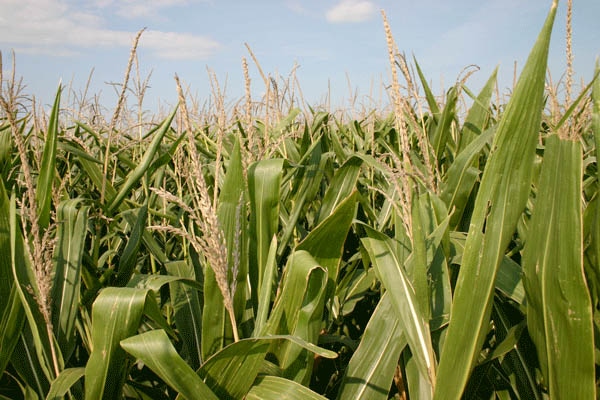
A number of factors continue to influence corn prices, with the market trying to weigh the negative versus the positive factors.There is some concern about the large, long positions held by both index and managed funds and the possible negative impact of liquidation of some of those positions.One of the largest uncertainties is the fate of the ethanol blender's tax credit.
December 10, 2010

December 2010 corn futures have regained more than half the decline that occurred from Nov. 9 to Nov. 23. Cash prices have recovered even more as basis levels continue to strengthen, said University of Illinois agricultural economist Darrel Good.
"A number of factors continue to influence corn prices, with the market trying to weigh the negative versus the positive factors. There is some concern about the large, long positions held by both index and managed funds and the possible negative impact of liquidation of some of those positions," he said.
Such activity could have some short-term impact on price movement, but over a longer period, prices will follow fundamental value. As is often the case, there is both uncertainty about fundamental factors and conflicting fundamental factors.
"One of the largest uncertainties is the fate of the ethanol blender's tax credit. That credit is currently at 45 cents per gallon of ethanol blended into the fuel supply, but that credit is set to expire on Jan. 1, 2011," he added.
Congress could choose either to renew the credit at the current or lower level or let the expiration stand. All options are being debated without a strong indication of the likely outcome. A renewal of the tax credit, even at a lower level, would point to continued strong ethanol demand and the likelihood of ethanol production exceeding the mandate of 13.95 billion gallons in 2011.
"Without the tax credit, ethanol production would presumably not drop below the mandate. The relationship between ethanol and gasoline prices would determine if production exceeded the mandate, while the level of ethanol and gasoline prices would influence the price of corn," he said.
Current ethanol and gasoline prices favor ethanol blending (ethanol prices lower than gasoline prices) and would support corn prices at current or higher levels.
Corn export prospects mixed
Prospects for corn exports are a bit mixed at this point. China denies it plans to import significant quantities of corn from any source in the near future. At the same time, many analysts believe that China will need to import more substantial amounts of corn yet this marketing year.
"On another front, ongoing wet weather is affecting the quality of the Australian wheat crop, suggesting that a larger portion of that crop will be feed wheat rather than milling-quality wheat. More feed wheat in the world market could complete with corn exports," Good said.
On the supply side, only modest and scattered rainfall in central and eastern portions of Argentina keeps conditions there very dry. Planting has been slowed, and concerns about crop size remain. A shortfall in Argentine production would support U.S. corn exports during the last half of the 2010-11 marketing year.
In the United States, the hard red winter wheat crop has gone into dormancy under generally dry conditions and with very low condition ratings. As of Nov. 28, only 37 percent of the crop in Kansas and 44 percent of the crop in Oklahoma were rated in good or excellent condition, he said.
"The fate of that crop will not only be important to the wheat market but might be important for corn. Lower wheat production could provide a modest boost for corn feeding, but very poor winter wheat conditions next spring could result in some replanting to other crops, including feed grains," he said.
On Dec. 10, the USDA will release its monthly report of U.S. and world supply and consumption projections. That report will provide a look at USDA's assessment of unfolding developments on the likely consumption of U.S. corn during the current marketing year. The report will be updated on Jan. 12 and will be released along with the final production estimate for the 2010 U.S. crop and an estimate of Dec. 1, 2010 stocks of U.S. corn, he said.
A better assessment of the Argentine corn crop will also be available in January, Good said.
"It is likely that corn prices will continue to trade in a relatively wide range with daily price changes influenced by the 'news of the day.' A substantial rally or decline in prices would require that fundamental factors begin to align in either a positive or negative direction. Those factors will be revealed in fairly quick progression over the next six weeks," he said.
You May Also Like



